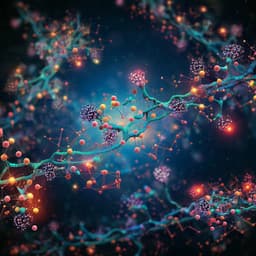
Psychology
Finding positive meaning in memories of negative events adaptively updates memory
M. E. Speer, S. Ibrahim, et al.
Negative autobiographical memories can elicit maladaptive affective responses, especially when ruminated upon, and are implicated in depression and stress-related disorders. A potential route to ameliorate their impact is to find positive meaning in past adversity, a strategy linked to fewer depressive symptoms, greater positive emotionality, and faster stress recovery. However, it is unknown whether such positive meaning finding updates the memory trace itself, altering future recollection. Because memory retrieval can transiently destabilize memory (rendering it susceptible to modification via processes such as reconsolidation), positively reframing a negative memory following reactivation might integrate new positive information and change later affect and content at retrieval. Candidate neural systems include the hippocampus (episodic reinstatement), ventral striatum (VS), and ventromedial prefrontal cortex (VMPFC), which support memory and positive valuation during recollection. The present research asks whether positive meaning finding adaptively updates negative autobiographical memories, changing how they feel and what is remembered, and whether such changes persist over weeks to months and are reflected in neural representations across time.
Prior work demonstrates that reactivation-induced updating (reconsolidation) can modify conditioned fear memories in rodents and humans, as well as procedural and episodic memories. Hippocampal mechanisms support episodic reinstatement and stable multivariate patterns across similar reactivations, while reward circuitry (VS, VMPFC) encodes the positive value of recollection. Cognitive reappraisal is known to reduce negative affect and engage prefrontal control regions and reward circuitry, but evidence for long-term changes to autobiographical memory content has been sparse, often limited to non-naturalistic stimuli and short delays. Reconsolidation frameworks propose a time-limited window (approximately 10 minutes to 6 hours post-reactivation) during which new information can update a reactivated memory. Prediction error signals can facilitate updating. This study integrates these literatures by testing whether internally generated positive reinterpretation after reactivation can update naturalistic negative autobiographical memories and how such updates manifest behaviorally and neurally.
Four experiments tested whether positive meaning finding updates negative autobiographical memories and examined durability, boundary conditions, and neural mechanisms.
- Experiment 1 (N=102; 4 groups): Participants generated 12 specific negative autobiographical memories (Recall 1), wrote descriptions, and rated current feeling (−5 to +5), intensity, vividness, and age. They then elaborated by focusing on positive aspects (Positive, n=26), negative aspects (Negative, n=25), neutral aspects (Neutral, n=25), or performed a distraction task (n=26). One week later (Recall 2), they described and re-rated the same memories. Two independent raters (high reliability; Cronbach’s alpha=89.6%) coded positivity and content similarity/dissimilarity. Analyses: one-way ANOVAs on change scores (Recall2–Recall1); planned correlations in the Positive group between feeling change and content changes. Only memories verified as the same across sessions were analyzed; participants with <50% valid memories were excluded.
- Experiment 2 (online, N=91; 2 groups): Three-session longitudinal design with Session 2 at ~1 week and Session 3 at ~2 months. Participants recalled 10 negative memories and either performed positive meaning finding (Positive, n=46) or natural recollection (Control, n=45). At follow-ups, they re-described and re-rated memories. Raters coded positivity and dissimilarity (alpha=94.9%). Time (1-week, 2-month) × Group ANOVAs were conducted. Content analyses quantified proportions of details preserved from Recall 1, integrated from elaboration, or newly added (positive/negative) at later recalls.
- Experiment 3 (N=72; 3 groups): Reconsolidation test manipulating reactivation and test delay. All participants generated 32 negative memories with unique keyphrases. On Day 2, Immediate-Test and Delayed-Test groups reactivated all memories (Recall 1), then after 10 minutes performed Elaboration: 16 positive-meaning trials and 16 control (natural recall). No-Reminder group did Elaboration 24 h after Recall 1 (elaboration temporally distant from reactivation). Recall 2 occurred 1 h later for Immediate-Test and 24 h later for Delayed-Test and No-Reminder. Feeling change (Recall2–Recall1) was computed for positive vs control conditions; ANOVA controlled for baseline differences.
- Experiment 4 (fMRI, N=32): Four-session design: behavioral session to select 32 memories (16 positive, 16 control), fMRI Scan #1 (Recall 1 then Elaboration with 10-minute gap), fMRI Scan #2 24 h later (Recall 2), and a 2-month behavioral follow-up. MRI acquisition used a 3T Siemens Trio; preprocessing in SPM12 and FSL with motion spike regression and 5 mm smoothing. Whole-brain GLMs contrasted positive vs control during tasks. Representational similarity analysis (RSA) computed recall1–recall2 multivoxel pattern dissimilarity in a priori ROIs (hippocampus, ventral striatum, VMPFC), and related these to emotion change across retrievals; condition differences were tested using one-sample sign permutation tests (5000 iterations).
- Experiment 1: Positive meaning finding produced the greatest increase in positive emotion across sessions. One-way ANOVA for feeling change showed a main effect of group, F(3,98)=4.08, p=.009, η²=0.111. Post hoc t-tests: Positive > Negative, t(49)=2.87, p=.005, d=0.81; Positive > Neutral, t(49)=2.72, p=.009, d=0.76; Positive > Distraction, t(50)=2.30, p=.026, d=0.64; other groups did not differ (all p>.58). Within the Positive group, increases in positive feeling correlated with increases in positive content, r(25)=.520, p=.006, and with content dissimilarity, r(25)=.434, p=.027. Future-oriented elaborations did not explain the effect.
- Experiment 2: Effects persisted over 1 week and 2 months. Time×Group ANOVAs on feeling change, positive content, and dissimilarity showed main effects of time (all p≤.008) and group (p=.037, .003, <.001), no interactions. Positive group exhibited greater increases than Control at 1 week: feeling t≈2.39, p=.019, d=0.50; positive content t≈2.26, p=.026, d=0.48; dissimilarity t(89)=3.33, p=.001, d=0.70; and at 2 months: feeling t≈2.50, p=.014, d=0.53; positive content t≈2.06, p=.043, d=0.43; dissimilarity t(89)=3.07, p=.003, d=0.64. Content decomposition: Positive group integrated ~10.2% (1-week) and ~10.5% (2-months) of their positive elaboration into future recollections (both p<.001), added more new related positive details than Control (1-week: 12.2% vs 8.1%, t≈2.63, p=.01, d=0.55; 2-months: 14.1% vs 10.2%, t(89)=2.29, p=.025, d=0.48), and consequently preserved a smaller proportion of initial Recall 1 details (1-week: 66.7% vs 79.8%, t≈−3.75, p=.003, d=0.79; 2-months: 64.7% vs 78.4%, t≈−4.00, p=.0001, d=0.84). New negative details did not differ between groups.
- Experiment 3 (reconsolidation boundary conditions): ANOVA (controlling baseline) showed main effects of condition, F(1,137)=5.32, p=.023, η²=.03, and group, F(2,137)=3.43, p=.035, η²=.04; no interaction. Only the Delayed-Test group (reactivation + elaboration within 10 min; test 24 h later) showed greater positive feeling change for positive vs control trials relative to Immediate-Test (1 h test) and No-Reminder (elaboration 24 h after reactivation). Delayed-Test vs Immediate-Test: t(45)=2.44, p=.019, d=0.74; Delayed-Test vs No-Reminder: t(44)=2.03, p=.048, d=0.66; Immediate-Test vs No-Reminder: n.s. This pattern supports reactivation-induced reconsolidation updating.
- Experiment 4 (neural correlates): Behaviorally, positive trials were more positive at 24 h, t(31)=5.13, p<.001, d=0.91, and at 2 months (n=18), t(17)=3.23, p=.005, d=0.76. RSA showed greater recall1–recall2 pattern dissimilarity tracking increases in positive emotion for positive vs control in hippocampus, t(31)=2.36, p=.025, d=0.42, and ventral striatum, t(31)=2.42, p=.021, d=0.43; not VMPFC. Whole-brain contrasts indicated that positive elaboration engaged striatum and vmPFC (and prefrontal control regions), and updated memories re-engaged cortico-striatal circuitry at Recall 2 when positivity increased.
Across four experiments, positively reinterpreting negative autobiographical memories after reactivation led to adaptive memory updates evident as increased positive emotion and more positive content at subsequent retrievals. These changes persisted over at least two months and were not explained by generic rehearsal or immediate short-term effects. The reconsolidation boundary test showed that updating emerged specifically when elaboration followed a reminder within the presumed reconsolidation window and when tested after a delay, consistent with reactivation-induced updating mechanisms rather than mere carryover of the last elaboration. Neural multivariate analyses revealed that increases in positivity across retrievals were associated with greater representational change in hippocampus and ventral striatum for positively elaborated memories, suggesting integration of positive content into the memory trace and altered affective valuation during retrieval. Together, findings indicate that a positive emotion-focused coping strategy can change how negative memories are felt, what is recalled about them, and how they are neurally represented over time, offering a mechanism through which such strategies may support wellbeing and resilience.
The study demonstrates that finding positive meaning in negative autobiographical memories adaptively updates those memories, leading to enduring increases in positive affect and changes in recalled content over weeks to months. Memory updating depended on reactivation and a consolidation delay, aligning with reconsolidation accounts, and was reflected in hippocampal and striatal representational changes across retrievals. These results extend reconsolidation and emotion regulation literatures to naturalistic, self-relevant memories and highlight a viable, ecologically valid strategy for modifying maladaptive memories. Future research should delineate the role of prediction error, characterize which memory features (e.g., arousal, vividness, trauma) and individual differences modulate update success, parse changes in positive versus negative affect more precisely, and identify boundary conditions and optimal parameters (e.g., relevance, duration) of positive updating interventions.
- Individual differences: Not all participants may benefit equally; higher anhedonia and depressive symptomatology were associated with less successful updating.
- Memory characteristics: Highly arousing, strongly negative, vivid, or traumatic memories may be more resistant to modification.
- Measurement: Feeling ratings spanned a single negative-to-positive scale; future work should separately assess positive and negative affect changes.
- Strategy specificity: An alternative positive-affect manipulation (extrinsic monetary reward post-reactivation) that was irrelevant to the targeted memory was less effective, suggesting relevance/meaningfulness is critical.
- Generalizability and boundary conditions: Need to test other positive emotion-eliciting strategies, dose/duration effects, and broader populations to establish limits and optimal conditions for memory updating.
Related Publications
Explore these studies to deepen your understanding of the subject.







